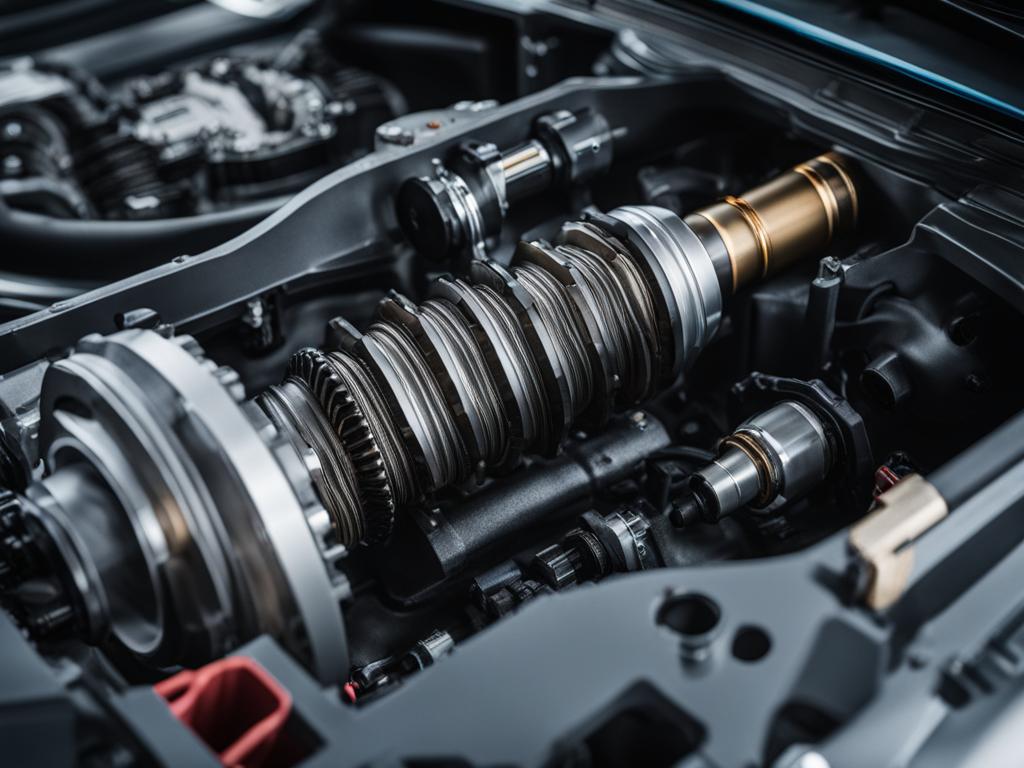Solving Your BMW Transmission Malfunction Issues
If you own a BMW, you know that a transmission malfunction can be a major cause for concern. These luxury vehicles are known for their performance and reliability, but like any mechanical component, the transmission can develop issues over time. Common problems include rough shifting, hesitation, and delayed engagement, which can affect your driving experience and potentially lead to expensive repairs if not addressed promptly.
There are several factors that can contribute to BMW transmission problems. Low fluid levels, worn components, and software issues are among the most common culprits. Regular maintenance, such as transmission fluid flushes and the replacement of worn parts, can help prevent these issues from occurring. However, if you are already experiencing transmission problems, it is crucial to have your vehicle inspected by a certified BMW technician. They have the expertise and specialized equipment to diagnose and fix the issue properly.
Key Takeaways:
- BMW transmission problems can cause rough shifting, hesitation, and delayed engagement.
- Common causes of BMW transmission malfunction include low fluid levels, worn components, and software issues.
- Regular maintenance, including fluid flushes and part replacement, can help prevent transmission problems.
- If experiencing transmission issues, it is essential to consult a certified BMW technician for proper diagnosis and repair.
- Addressing transmission malfunction signs promptly can prevent further damage and costly repairs.
Common Causes of BMW Transmission Malfunction
When it comes to BMW transmission malfunction, several common issues can cause problems with the transmission system. By understanding these causes, you can take necessary preventive measures and address any signs of transmission malfunction promptly, avoiding further damage or costly repairs.
- Low transmission fluid levels: Inadequate transmission fluid can lead to poor lubrication and overheating, resulting in transmission failure. Regularly checking and maintaining proper fluid levels is crucial to preventing transmission malfunction.
- Defective mechatronic unit: The mechatronic unit controls the transmission’s shifting and engagement. A faulty unit can cause harsh or delayed shifting, leading to transmission problems. Diagnostic scanning is necessary to identify and replace a defective mechatronic unit.
- Weak battery: Insufficient power supply from a weak battery can affect the proper functioning of the transmission system, causing malfunctions. Regular battery checks and replacements when necessary are important to avoid transmission issues.
- Faulty alternator regulator: The alternator regulator helps maintain a consistent charging rate for the battery. A malfunctioning regulator can result in voltage irregularities, impacting the transmission’s performance. Timely replacement of a faulty alternator regulator is vital to prevent transmission problems.
- Faulty MAF sensor: The Mass Air Flow (MAF) sensor measures the amount of air entering the engine, ensuring optimal fuel-to-air ratio. A faulty MAF sensor can cause transmission issues, such as improper shifting or reduced power. Replacing the sensor is necessary to resolve these problems.
Addressing transmission malfunction signs is crucial to prevent further damage. Signs that indicate BMW transmission issues include slipping, harsh or delayed shifting, grinding or whining noises, leakage, warning lights or error codes, and a burning smell. If you notice any of these signs, it is essential to consult a certified technician for proper diagnosis and repairs.
Troubleshooting BMW Transmission Malfunction
When experiencing a BMW transmission malfunction, it is important to diagnose the problem using a diagnostic scanner or OBD-2 scanner. This will allow you to read the error codes and determine the specific issue with the transmission. Depending on the diagnosis, you may be able to fix the problem yourself by refilling or replacing the transmission fluid, checking for leaks, replacing the mechatronic sleeve or adapter, updating the EGS transmission computer software, or replacing faulty components. However, for more complicated issues, it is recommended to consult a certified technician for professional assistance.
Diagnosing a BMW transmission malfunction requires the use of a diagnostic scanner or OBD-2 scanner. These devices can read the error codes that are generated by the transmission control module (TCM) and provide valuable information about the specific issue with the transmission. By understanding the error codes, you can determine whether the problem is related to fluid levels, mechanical components, or software.
If the diagnosis points to low transmission fluid levels, you can try refilling or replacing the fluid. It’s important to use the proper transmission fluid recommended by BMW for your specific model. Checking for leaks is also crucial, as a leaking transmission can cause malfunctions. Inspect the transmission pan, gasket, and seals for any signs of leakage and repair or replace them as necessary.
In some cases, the mechatronic sleeve or adapter may be the culprit behind the transmission malfunction. These components can wear out or become damaged over time, leading to shifting issues and other problems. Replacing them can help restore proper functionality to the transmission.
Another troubleshooting step involves updating the EGS transmission computer software. BMW periodically releases software updates that address known issues and improve the performance of the transmission. Checking for available updates and installing them can help resolve certain transmission malfunctions.
Lastly, faulty components, such as solenoids or sensors, can contribute to transmission problems. If the diagnostic scan indicates a specific faulty component, it may need to be replaced to restore the transmission to optimal functioning. Consult with a certified technician who has experience working with BMW transmissions to ensure accurate diagnosis and proper repairs.
Common Troubleshooting Steps for BMW Transmission Malfunction:
- Use a diagnostic scanner or OBD-2 scanner to read the error codes.
- Refill or replace transmission fluid if diagnosed with low levels.
- Check for leaks and repair or replace any faulty seals, gaskets, or components.
- Replace the mechatronic sleeve or adapter if necessary.
- Update the EGS transmission computer software to the latest version.
- Replace faulty components, such as solenoids or sensors, as indicated by the diagnostic scan.
Common Transmission Malfunction Codes in BMW
| Error Code | Description |
|---|---|
| P0722 | Output Speed Sensor Circuit No Signal |
| P0730 | Incorrect Gear Ratio |
| P0741 | Torque Converter Clutch Circuit Performance or Stuck Off |
| P0748 | Pressure Control Solenoid Circuit Electrical |
| P0778 | Pressure Control Solenoid B Electrical |
DIY Fixes for BMW Transmission Malfunction
Experiencing a BMW transmission malfunction can be a frustrating ordeal. However, there are some DIY fixes that you can try to address common issues and potentially save on repair costs. Before attempting any DIY fixes, it is important to assess your own mechanical knowledge and capabilities. Keep in mind that more complex issues, such as problems with the mechatronic unit or torque converter, may require professional repairs or replacement.
Refill or Replace Transmission Fluid
One of the first steps to take when dealing with a BMW transmission malfunction is to check the fluid level. Low transmission fluid can cause various issues, including rough shifting and hesitation. Refer to your vehicle’s manual for instructions on how to properly refill or replace the transmission fluid. Make sure to use the recommended fluid type for your specific BMW model.
Check for Leaks and Replace Faulty Components
Leaks can also contribute to transmission malfunction in BMWs. Inspect the transmission for any signs of leakage. If you discover a leak, it is important to identify the source and repair it promptly. Additionally, worn or faulty components, such as solenoids or valves, can cause transmission problems. Consult with a BMW technician or refer to repair guides for instructions on replacing these components.
Reset Adaptive Settings
BMW transmissions are equipped with adaptive settings that adjust to your driving habits. Over time, these settings can become skewed, leading to transmission issues. Resetting the adaptive settings can help recalibrate the transmission. Consult your vehicle’s manual or online resources for instructions on how to reset the adaptive settings for your specific BMW model.
Switch to Winter Mode
If you are experiencing transmission issues during cold weather, consider switching your BMW to winter mode. Winter mode modifies the vehicle’s shift points to better accommodate slippery road conditions. Refer to your vehicle’s manual for instructions on how to activate winter mode.
Replace Faulty Adapter for Mechatronic Bridge Seal
The mechatronic bridge seal is a common failure point in BMW transmissions. Symptoms of a faulty seal include leaking transmission fluid and erratic shifting. Replacing the faulty adapter for the mechatronic bridge seal can help alleviate these issues. Refer to repair guides or consult with a BMW technician for instructions on replacing the adapter.
Keep in mind that these DIY fixes are general recommendations and may not apply to every BMW transmission malfunction. If you are unsure or uncomfortable with performing any repairs yourself, it is always best to consult with a certified technician. They have the knowledge and experience to accurately diagnose and resolve transmission issues in BMW vehicles.

| Common DIY Fixes for BMW Transmission Malfunction | Benefits |
|---|---|
| Refill or Replace Transmission Fluid | Improves shifting performance and reduces hesitation |
| Check for Leaks and Replace Faulty Components | Prevents further damage and restores proper transmission function |
| Reset Adaptive Settings | Recalibrates the transmission for optimized performance |
| Switch to Winter Mode | Adjusts shift points for better traction and control in winter conditions |
| Replace Faulty Adapter for Mechatronic Bridge Seal | Resolves issues related to leaking fluid and erratic shifting |
Conclusion
Experiencing a BMW transmission malfunction can be a challenging issue for owners. However, with proper diagnosis and repair, many of these problems can be resolved. It is crucial to address transmission malfunction signs and symptoms as soon as they arise to prevent further damage and costly repairs.
Whether you choose to attempt DIY fixes or consult a certified technician, taking prompt action is the key to resolving BMW transmission issues. Regular maintenance, such as transmission fluid flushes and replacement of worn parts, can help prevent transmission problems in BMWs.
Remember, if you are experiencing BMW transmission issues, it is important to have your vehicle inspected by a certified BMW technician. They have the expertise and specialized tools to accurately diagnose and repair your transmission.
By troubleshooting BMW transmission problems, you can ensure the longevity and optimal performance of your BMW. Don’t let transmission malfunctions hold you back from enjoying the pleasures of driving your luxury vehicle. Take the necessary steps to address transmission issues promptly and keep your BMW running smoothly on the road.
FAQ
What are some common BMW transmission problems?
Some common BMW transmission problems include rough shifting, hesitation, and delayed engagement.
What can cause a BMW transmission to malfunction?
Some common causes of BMW transmission malfunction include low transmission fluid levels, a defective mechatronic unit, a weak battery, a faulty alternator regulator, and a faulty MAF sensor.
What are some signs of transmission malfunction in a BMW?
Some signs of transmission malfunction in a BMW include slipping, harsh or delayed shifting, grinding or whining noises, leakage, warning lights or error codes, and a burning smell.
How can I diagnose a BMW transmission malfunction?
You can diagnose a BMW transmission malfunction using a diagnostic scanner or OBD-2 scanner to read the error codes and determine the specific issue with the transmission.
Are there any DIY fixes for BMW transmission malfunction?
Yes, there are some DIY fixes you can try for BMW transmission malfunction, such as refilling or replacing the transmission fluid, checking for leaks and replacing faulty components, resetting the adaptive settings, switching to winter mode, and replacing the faulty adapter for the mechatronic bridge seal.




